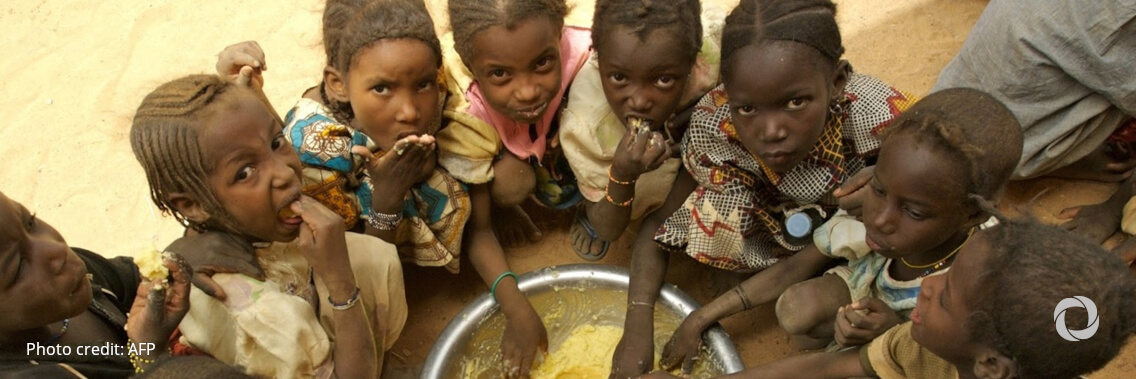The number of acutely food insecure people in West and Central Africa has now risen to a record high of 28 million people and trends point toward a further deterioration if support to stem the spread of hunger is not ramped up, two UN agencies – the Food and Agriculture Organization of the United Nations (FAO) and the United Nations World Food Programme (WFP) – warned.
In Sahel and West Africa, 26 million people currently do not have sufficient food during the ongoing harvest season (October-December 2021) which should mark the start of the end of the lean season, according to a just-released Cadre Harmonisé (CH) report on food security. An additional 2 million people in the Central Africa Republic are also acutely food insecure during the same period, according to a separate analysis by the Integrated Food Security Phase Classification (IPC).
This is the largest number of people facing levels of high acute food insecurity in West and Central Africa recorded since 2014, with levels of acute malnutrition exceeding the 15 percent emergency threshold in parts of Burkina Faso, Chad, Mali, Mauritania, and Niger.
Surging hunger is being driven by protracted conflict, economic disruptions linked to the COVID-19 pandemic, limited access to basic social services, and soaring food prices — which this month reached a ten-year high. A poor 2021 rainy season has also affected crop and pasture production in some areas.
FAO and WFP are urging regional leaders and their partners to step up to meet immediate needs and address the main drivers of food insecurity in the region.
Both the CH and IPC reports warn that without immediate, efficient, and coordinated action, the number of people who will not know where their next meal will come from will reach 35,7 million in the Sahel and West Africa and 2.3 in CAR through June to August 2022 – a 23-percent increase compared with this year’s lean season (June to August 2021). These projections include 2.5 million people in an emergency (IPC/CH Phase 4) and 13 550 men, women, and children in catastrophe or famine-like conditions (IPC/CH Phase 5) during the 2022 lean season when food is most scarce.
“Food security indicators are all pointing in the wrong direction in this region, and we’re seeing hunger at its highest level in almost eight years. We are facing a troubling funding outlook with needs outpacing available funding. This is the time to ramp up our assistance, not cut rations,” said Chris Nikoi, WFP’s Regional Director for Western Africa.
“Donors need to step up before the lean season sets in pushing needs up. We must act now to stop a preventable rise in malnutrition rates. And at the same time, we must help build the resilience of communities through a proactively planned, government-led, community-owned response to food insecurity and malnutrition,” Nikoi added.
Despite the lifting of COVID-19 restrictions, the economic impact of the pandemic is still unfolding in the region with constrained fiscal space, increased public debt, rampant inflation, and rising food prices, which have led to a 3-percent increase in extreme poverty in 2021.
“Given the situation, we call for scaling up investments to ensure off-season production and safeguard pastoralists’ livelihoods in view of the upcoming lean season,” said Gouantoueu Robert Guei, FAO Sub-regional Coordinator for West Africa.
“The reduced availability of pasture and the limited mobility due to insecurity will pose tremendous challenges to pastoralists in the next few months. At the same time, as of early 2022, we call for adequate investments in the preparation for the next agricultural season. Investing in people’s livelihoods is key to preventing food insecurity from worsening,” Guei added.
Ensuring immediate access to food, sustained food production, and preserving food systems, paving the way for recovery, especially in conflict-affected areas such as the Liptako-Gourma region and the Lake Chad Basin, are the most cost-effective humanitarian response according to FAO and WFP.

